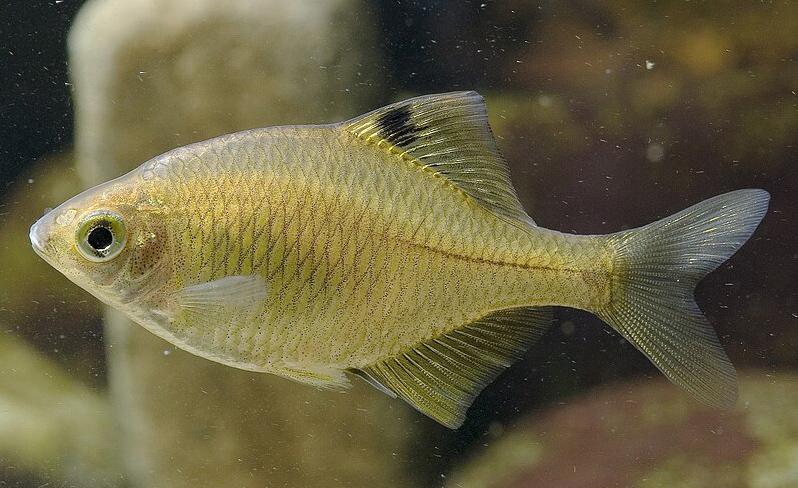Parasitic fish embryos: adaptations and acrobatics in early development
Author: Ramón Muñoz-Chápuli has been Professor of Animal Biology in the University of Málaga until his retirement. He has investigated for forty years in the fields of developmental biology and animal evolution.
Parasitism is very common among invertebrates, but much less so among vertebrates. The case of lampreys is well known. They attach to the bodies of other aquatic vertebrates to suck their blood. Less popular is the candiru or vampire fish (Vandellia cirrhosa), a small fish from the Amazon that enters the bodily openings of its victims to pierce vessels and feed on their blood. Some cases of attacks on humans have been mentioned, but they must be exceptional. Other fish, such as pearlfish (Carapidae), are also symbionts or endoparasites within the bodies of sea cucumbers.
Another modality practiced by some vertebrates is brood parasitism, that is, the transfer of parental care to another species. The typical example is the cuckoo, which lays its eggs in the nests of other birds. Its eggs develop rapidly, so that when the young cuckoos hatch, they eject the other eggs or newly hatched chicks from the nest. The parents are unable to recognize the deception and feed the cuckoo.
Among fish, brood parasitism has also evolved. The cuckoo catfish (Synodontus multipunctatus) takes advantage of some cichlids from Lake Tanganyika that keep their eggs in their mouths to protect them until they hatch. The cuckoo catfish waits for the cichlid females to spawn, eats as many cichlid eggs as it can, and deposits its own in the same place. The females ingest their own eggs mixed with those of the cuckoo catfish and harbour them in their mouths. Since the parasite’s development is accelerated, the larvae soon hatch in the host’s mouth and eat the cichlid eggs or newly hatched larvae.
In all these cases, the parasites are adult individuals or larvae. But the extreme case we are going to discuss here is that of embryos that parasitize a host from early stages of development. Among invertebrates, especially insects, there are numerous cases. But only a very few vertebrates, specifically fish, have embryos capable of parasitizing a host, and they do so by astonishingly modifying their embryonic development.

Some fish lay their eggs in the bodies of invertebrates to favour their development. This is the case of the Japanese tubesnout (Aulichthys), a parasite of ascidians, or the snailfish (Careproctus), which lays its eggs in the gills of the king crab (reviewed in 1). But probably the most surprising and well-studied case is that of the bitterlings (genus Rhodeus, Figure 1), small fishes from Eurasian rivers, parasites of freshwater mussels. A group of biologists from Leiden University recently published a comprehensive study on this extreme form of parasitism 2.
Freshwater mussels irrigate their gills through inhalant and exhalant siphons. The female bitterling introduces her eggs through the exhalant siphon using a long ovipositor. Then, the male deposits sperm near the inhalant siphon, so that the sperm are aspirated and fertilize the eggs within the gills. One or two days after fertilization, the embryo, which is in a very early stage of development, hatches. To rid themselves of parasites, mussels can “sneeze”, emitting a quick pulse of water through their gills. Bitterling embryos have developed adaptations to prevent this. Their yolk sac emits extensions that give the embryo an anchor-like shape, making it difficult to expel.

Even more surprising is the movement of the embryo relative to the yolk, unique among fish, a movement similar to the blastokinesis of embryos of many types of insects 3. Blastokinesis is an acrobatic back-and-forth movement of the embryo that can be seen in the first few seconds of this video. The bitterling embryo performs a kind of front-flip movement (figure 2). The entire process can be seen in this video published by the article’s authors. The end result of this front-flip is that the embryo’s head will be oriented toward the water current flowing through the gills and in the opposite direction to normal fish development.
After 3-4 weeks, the embryo completes its development at the expense of nutrients absorbed from the host, and the swimming larvae are released into the environment.
It is particularly striking that freshwater mussels generate, in their reproductive cycle, a glochidium larva that attaches to the gills of fish. Normally, the fish is not damaged by the glochidia, and the main purpose of this interaction is the dispersal of the mussel larvae. Thus, the bitterling and freshwater mussels can mutually harbour embryos and larvae of each other’s species. This led to speculation whether the relationship between fish and mussels could be classified as mutualism (beneficial for both species), but it has been demonstrated that the benefit obtained by the bitterling is much greater than the small cost of carrying the glochidia 4.
This exceptional strategy of embryonic parasitism in vertebrates demonstrates the extraordinary innovative plasticity of development, which can generate very early adaptations to obtain evolutionary advantages.
References
- Leung TLF. (2014) Fish as parasites: an insight into evolutionary convergence in adaptations for parasitism. J Zool. doi:10.1111/jzo.12148. ↩
- Yi W, Reichard M, Rücklin M, Richardson MK. (2024) Parasitic fish embryos do a “front-flip” on the yolk to resist expulsion from the host. Proc Natl Acad Sci U S A doi: 10.1073/pnas.2310082121 ↩
- Panfilio KA. (2008) Extraembryonic development in insects and the acrobatics of blastokinesis. Dev Biol. doi: 10.1016/j.ydbio.2007.11.004. ↩
- Reichard M, Ondracková M, Przybylski M, Liu H, Smith C (2006) The costs and benefits in an unusual symbiosis: experimental evidence that bitterling fish (Rhodeus sericeus) are parasites of unionid mussels in Europe. J Evol Biol. doi: 10.1111/j.1420-9101.2005.01051.x. ↩